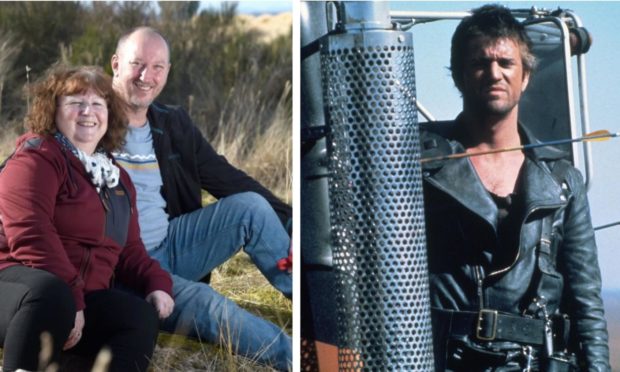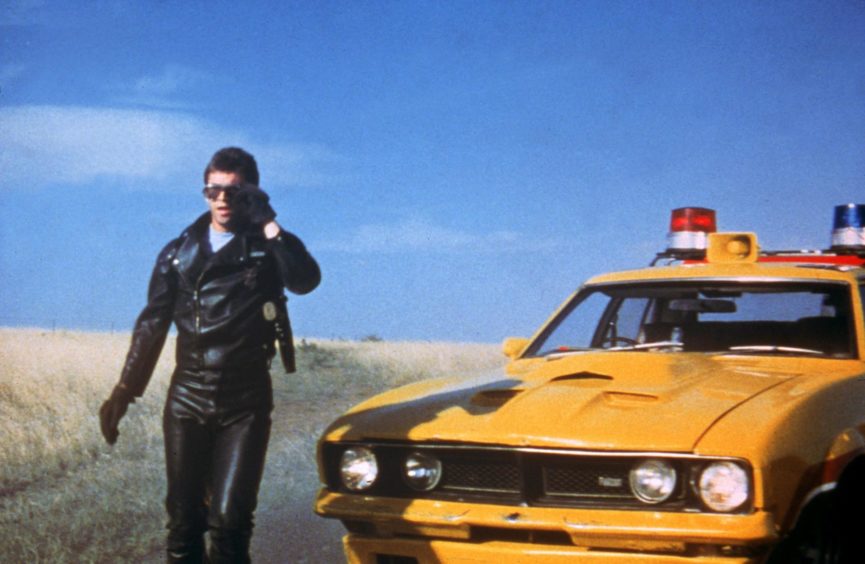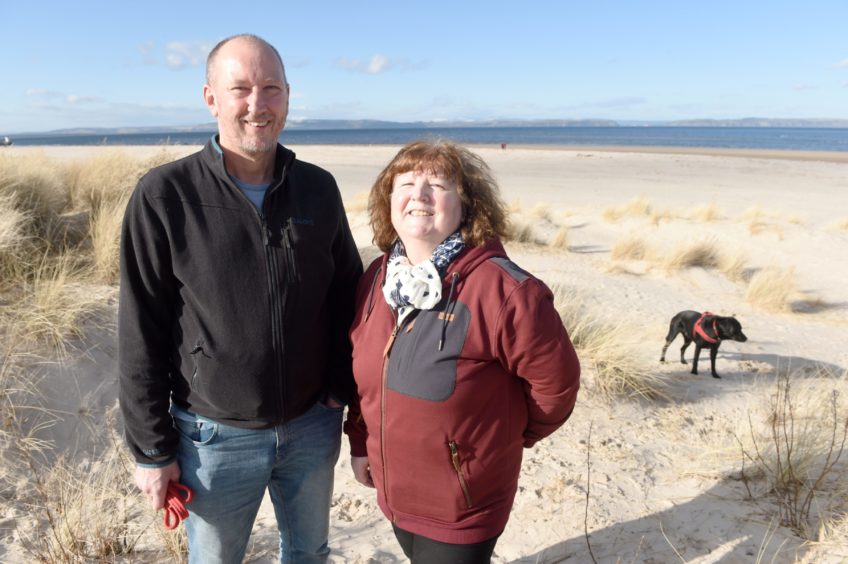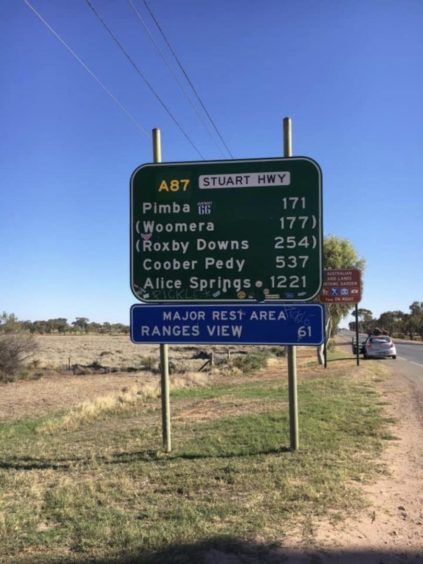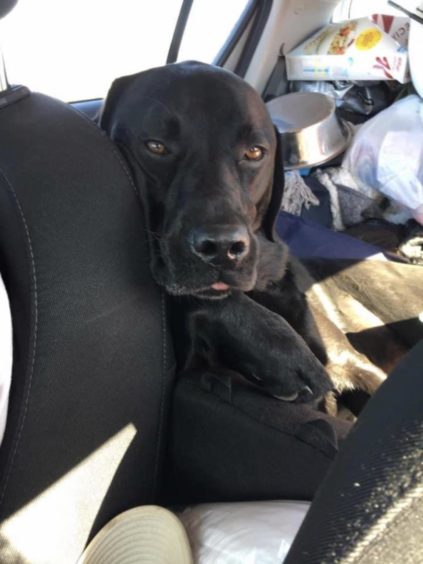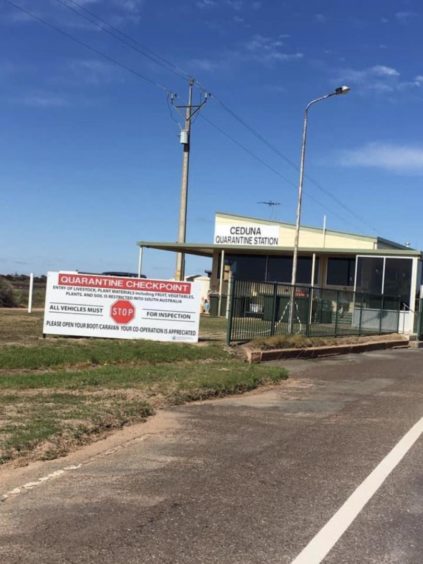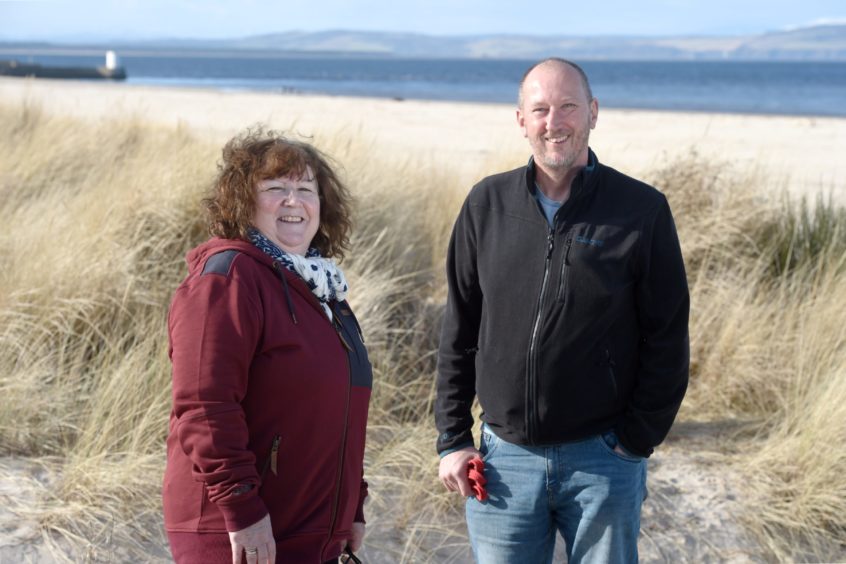It was a trip into the unknown, along a route which seemed to last forever, to a vast expanse of terrain where water is more expensive than petrol.
And many of the images taken by Scottish couple, Joy and Andy Snelling, on their incident-packed odyssey along Australia’s barren Eyre Highway – often described as the Road to Nowhere – look like stills from a dystopian Mad Max movie.
The couple, originally from Inverness, decided in their mid-50s that they wanted to visit their children who had moved Down Under and eventually took the plunge by emigrating in 2018, as the prelude to searching for work in Alice Springs.
They drove into a hostile landscape, alongside the infamous Nullarbor Plain with its startling resemblance to the recent pictures which have been transmitted back to earth from Mars by Perseverance.
And the latter word summed up the fashion in which the duo responded to the challenge of starting a new life in a foreign country and negotiating a series of setbacks which Joy has now chronicled in a new work I Could Write a Book.
The Eyre Highway was only built after mutiny and murder
Joy and Andy are two of life’s can-do characters, imbued with a wanderlust, derring-do and the ability to turn adversity to advantage.
Others might have been daunted by the prospect of traversing the 1,000-mile-plus highway, but they approached the various logistical challenges with a steely resolve.
She recalled: “We were driving around 10 hours a day, finally stopping at a roadhouse just before dark. You couldn’t risk driving the Nullarbor at night.
“There was too much danger of a stray kangaroo or emu colliding with you and totalling you car – and then you would be really screwed, stuck in the middle of nowhere without a ride or a phone signal. Distance can make all the difference between life and death out there. You can’t afford to mess about.
“The first European to cross the Nullarbor was English explorer Edward John Eyre in 1841.
“It took him and his men about four months in an ordeal which included dehydration, murder and mutiny.
“Andy and I got on each other’s nerves from time to time, but stopped short of the rest.”
A thousand miles of desolation – and rampant roadkill
The Snellings were fascinated by the sights and experiences on their marathon trek, despite being occasionally reminded of the danger lurking beneath the surface.
Joy recalled: “Every day, we would depart about 9.30am: get packed up, drive out on to the road and see that, once again, it was a straight line that never seemed to end, disappearing into the horizon.
“There was something quite surreal about it, a road which just seemed to go on forever, day after day; and the feeling that the steering wheel was actually redundant, because it is practically a straight line from here to eternity.
“We travelled all day, only stopping for coffee, petrol and water at servos [service stations]. Remarkably, water was more expensive than petrol – about three times more, in fact. That might seem ridiculous until you remember that you are travelling through an arid wasteland.
“The Nullarbor was a haven for some. Wildlife, obviously. A large portion of the plain has Wilderness Protection Status and sustains 390 species of plant and many rare species of animal, including kangaroos, owls and bats.
“But, as our little silver Hyundai pootled along the never-ending highway, the most common sighting was roadkill. There were plenty of dead roos – far fewer live ones.”
Sparse settlements, rickety hamlets – and a golf course
The Scots, who were in the car with their cherished dog, Barney, passed a string of makeshift settlements, all with their own idiosyncratic names including Cocklebiddy, Eucla, Yalata and Kimba.
And, even as they marvelled at the wild rugged scenery, they suddenly found themselves learning more about the globe’s most singular sporting challenge.
Joy said: “As if the experience of crossing such a landscape wasn’t disorientating enough, it was here we found the world’s longest golf course.
“The Nullarbor Links ranges some 1,365 kilometres (848 miles) along the southern coast with 18 holes dotted between each of the route’s roadhouses and settlements.
“You can basically come off Eyre Highway at designated points and play a hole of golf, then get back in your car.
“However, not having brought our clubs and not being particularly keen golfers anyway, we chose to give it a miss. I just found myself wondering who cut the greens.”
Getting too close to the dingo population
The Snellings were en-route to Alice Springs, where Andy had been promised the chance to start a painting and decorating job which might have earned them permanent residency in Australia.
But although that prospect gradually evaporated, even as the duo worked hard to make a success of their new life, they remained as close to one another as you might expect from a pair who have spent 37 years together.
As for their canine companion, he was spared a close encounter with some dangerous adversaries during that protracted trip along Eyre Highway.
Joy said: “Barney, our furry, faithful friend, was the easiest travelling companion we could have asked for. Most of the time, he just dozed in the back of the car for hours on end. But again, you had to be careful out there [in the wilderness].
“Halfway through our journey, we stopped at the Nullarbor Roadhouse for a night.
“Stepping out of our room in search of a bite to eat, we came face to face with a dingo – which was our first really up-close meeting and I was struck by what beautiful dogs they are, with friendly faces and lovely red coats.
“They do not look menacing in the slightest; quite the opposite, they look friendly. But we would soon learn they are a far less timid animal when they are in a pack and they are well known for enticing domestic dogs into playing with them, which is actually a ploy to get your dog away, so they can kill it.
“It’s pretty devious and it’s pretty horrible. The poor domestic dog must be thinking: ‘Great, I’ve got some friends to play with’. Then suddenly, the pack attacks.
“Suffice to say, we kept a very close eye on Barney during the trip to keep him safe.”
Going underground in the world’s opal centre
Space mattered to the Scottish couple. As they advanced through different regions, they regularly stumbled into new time zones, which occasionally left them perplexed.
At Cocklebiddy, a sign informed them they were 45 minutes ahead of Perth – “Please put your watch forward”. Then, from Australia Western Standard Time, they switched on another 45 minutes to Australia Central Standard Time.
The next stop was Coober Pedy, a little community which just happened to be the world’s opal capital and provides about 70% of the global supply of the precious stone. Nonetheless, it didn’t prove a jewel of a location for Joy.
She recalled: “Most of the town is underground. So much of it has been used for mining over the years – and the heat is so oppressive – that it seems only natural that large sections of the ground have been hollowed out to house shops, homes and facilities.
“We were excited to take a look around this weird and wonderful place, but we had nowhere to leave Barney. Then, when we finally found a place that allowed pets, the manager told us that we would have to chain Barney to a wall.
“That sealed it. We turned the car around and left. To be honest, we hated Coober Pedy – it was stony and grey and a bit grubby and we were glad to leave. We were typical Scottish with that bloke. Our dog was not getting chained up anywhere, anytime.”
A happy arrival – but an eventual return to Scotland
The duo were not prepared to suffer fools gladly on their journey. Joy noted, even before they arrived in Alice Springs: “Aussies and Scots do tend to clash”.
And these tensions became more apparent as the months passed to the point where the Snellings eventually returned to Scotland and settled down in Nairn at the end of 2019.
Yet, these redoubtable customers haven’t closed the door on returning to Oz.
As she said: “Our Aussie adventure had its highs and lows, its good and bad moments. But one thing it never was was boring. On the contrary, it had been one of the brightest, most colourful chapters of our lives.
“At the start of 2020, back in Nairn, and before the Covid-19 pandemic struck, I shared a Facebook post, laying it all out line by line: the decision to move to Australia, the journey out and the months spent in Perth, and the gruelling drive to Alice Springs.
“After it was done, I stared at it in disbelief. Had Andy and I really done all that stuff? It seemed unreal, but we had. At the start of the FB post, I had written something that grabbed me: ‘I could write a book’.
A few months later, Joy Snelling has been as good as her word.
You can read her story at https://www.amazon.co.uk/Could-Write-Book-Scottish-Australian-Adventure-ebook/dp/B08R68PNRJ
Nullarbor Plain has links to the movies
We have already mentioned Mad Max, which was filmed in various remote Australian locations, but you’ve probably never heard of Roadgames from 1981 which some critics have described as “the best Hitchcock movie the master of suspense never made”.
The compelling thriller, directed by Richard Franklin, stars well-known actors, Stacy Keach and Jamie Lee Curtis, later of A Fish Called Wanda and Trading Places fame.
The story revolves around a truck driver who, with the help of a hitchhiker, seeks to track down a serial killer, who is butchering his victims along desolate highways.
The big-budget production, which was shot on location in the Nullarbor Plain and in Melbourne, was blighted by problems between rival union organisations, at loggerheads over the casting of Curtis when they believed an Australian actress should get the part.
Franklin, who had wanted Sean Connery to play the lead role – but couldn’t afford the Scot’s fee – later lamented how the bad publicity had blighted the film’s reputation.
He said: “We found ourselves as the ping-pong ball in a game of politics between Melbourne and Sydney, and it nearly resulted in the film being shut down.”
It gained glowing reviews from the likes of Variety, Time Out and Empire and has been cited by Quentin Tarantino as one of his favourite movies. And its music score was by Brian May, who did a similar job on Mad Max 1 and 2.
But sadly, it still tanked at the box office.
